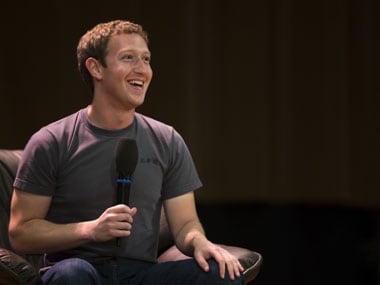Yesterday, _ New York Times_columnist Nick Bilton had written an article questioning whether Facebook was deliberately promoting only paid posts in people’s News Feeds. Bilton had pointed out that ever since promoted posts came up the number of likes and shares on his posts and links had gone down, but in an instance where he promoted a post, the numbers of shares and likes went up dramatically. You can view the full piece here.
Bilton has nearly 400,000 followers on Facebook and he says despite this the numbers for likes and shares started falling. Bilton points out that when the Follow button was first introduced user engagement had gone up but all that changed when sponsored posts came along.
Now Facebook has hit back and posted a response on its Fact-check section. The key point of that Facebook is making pointing out that NewsFeed algorithm is separate from the advertising algorithm in that we don’t replace the most engaging posts in News Feed with sponsored ones.
According to Facebook, here are some facts on the Newsfeed:
First, in aggregate, engagement - likes, comments, shares - has gone up for most people who have turned the Follow feature on. In fact, overall engagement on posts from people with followers has gone up 34 percent year over year.
[caption id=“attachment_648484” align=“alignleft” width=“380”]  Facebook CEO Mark Zuckerberg in this file photo. AP[/caption]
Second, a few data points should not be taken as representative of what actually is happening overall. There are numerous factors that may affect distribution, including quality and number of posts.
But Facebook does admit that for early adopters of the Follow button, user engagement has dropped even though the number of follower numbers has gone up. For this Facebook, states,
• When we first launched Follow, the press coverage combined with our marketing efforts drove large adoption. A lot of users started following public figures who had turned on Follow.
• Over time, some of those users engaged less with those figures, and so we started showing fewer stories from those figures to users who didn’t engage as much with their stories.
• The News Feed changes we made in the fall to focus on higher quality stories may have also decreased the distribution for less engaging stories from public figures.
How Faceboook decides which is a higher quality story is still not clear. Of course f-likes don’t really tell how many people read or saw the story. Meanwhile Hunter Walk, who worked atYouTube,had also responded to Nick Bilton’s argument stating that one can’t just blame paid posts for declining likes and shares. He wrote on his blog,
Facebook has gotten better at spam fighting. The previous “likes” could have come from bots or other spam techniques. What he’s seeing now is actual engagement
Facebook’s user engagement hasn’t kept up with volume of graph growth and newsfeed publishing. That’s to say, users are “liking” the same # of posts per day, but there are so many more posts in their newsfeed due to having more friends, subscribing to other pages that each friend gets fewer likes per item. Lots of apps/sites publishing into feeds now. You can read the complete post here.
Both are very relevant points. Facebook has definitely gotten better at fighting spam in News Feed. For instance I personally don’t see a lot of Farmville and app related content on my feed. However I do see a lot more more of the_most shared links widget_from sites I’ve liked on Facebook, which is great since because I can just click on see more to see the top four most share articles and choose.
But in addition, sponsored posts and pages have gone up as well both on desktop and mobile.


)
)
)
)
)
)
)
)
)



